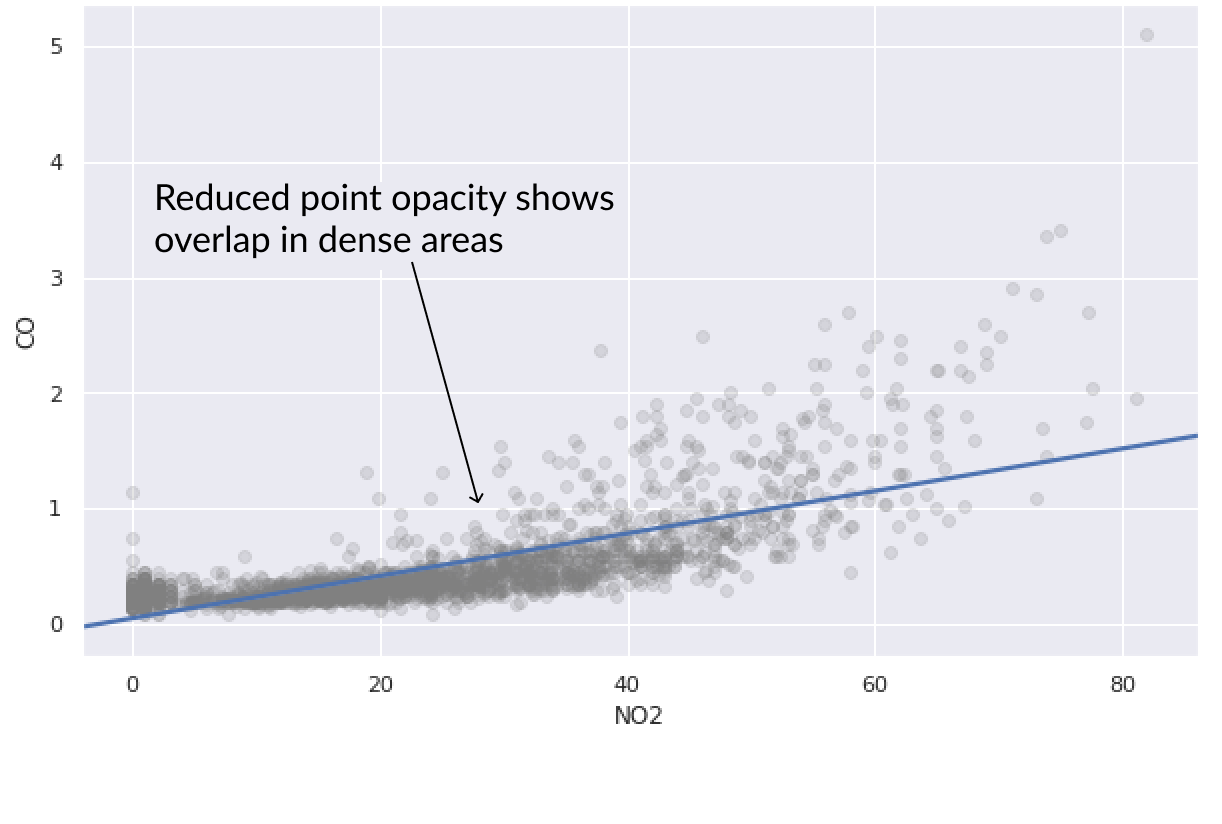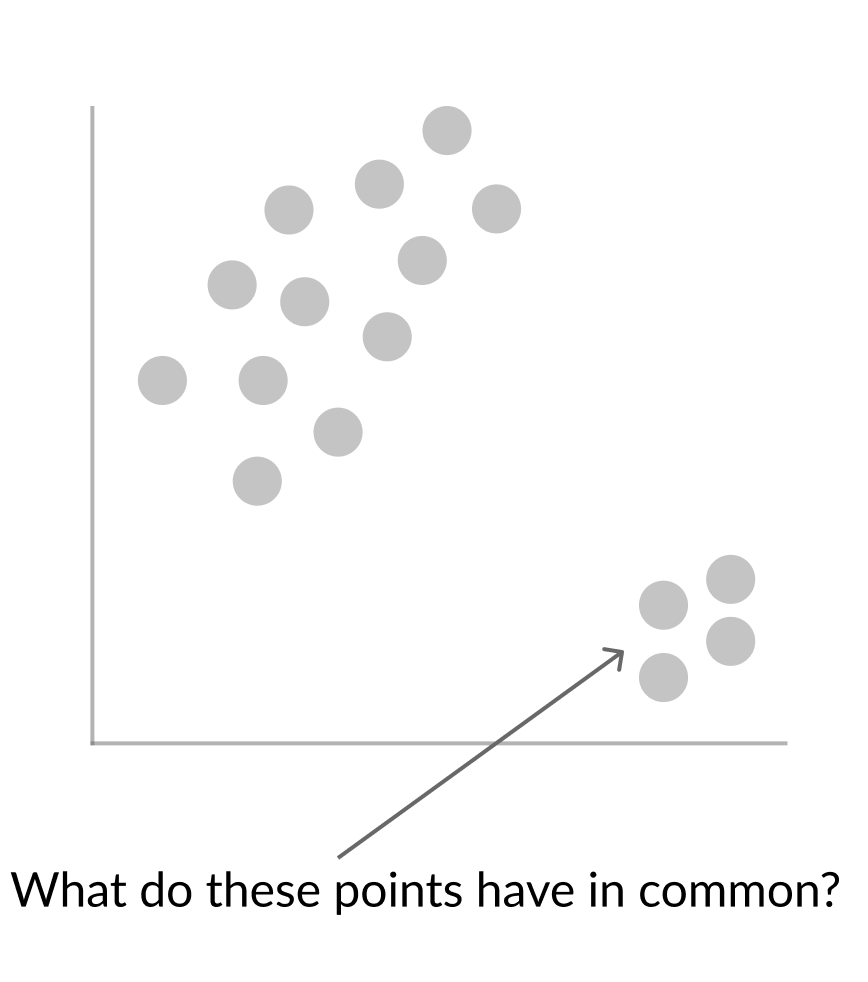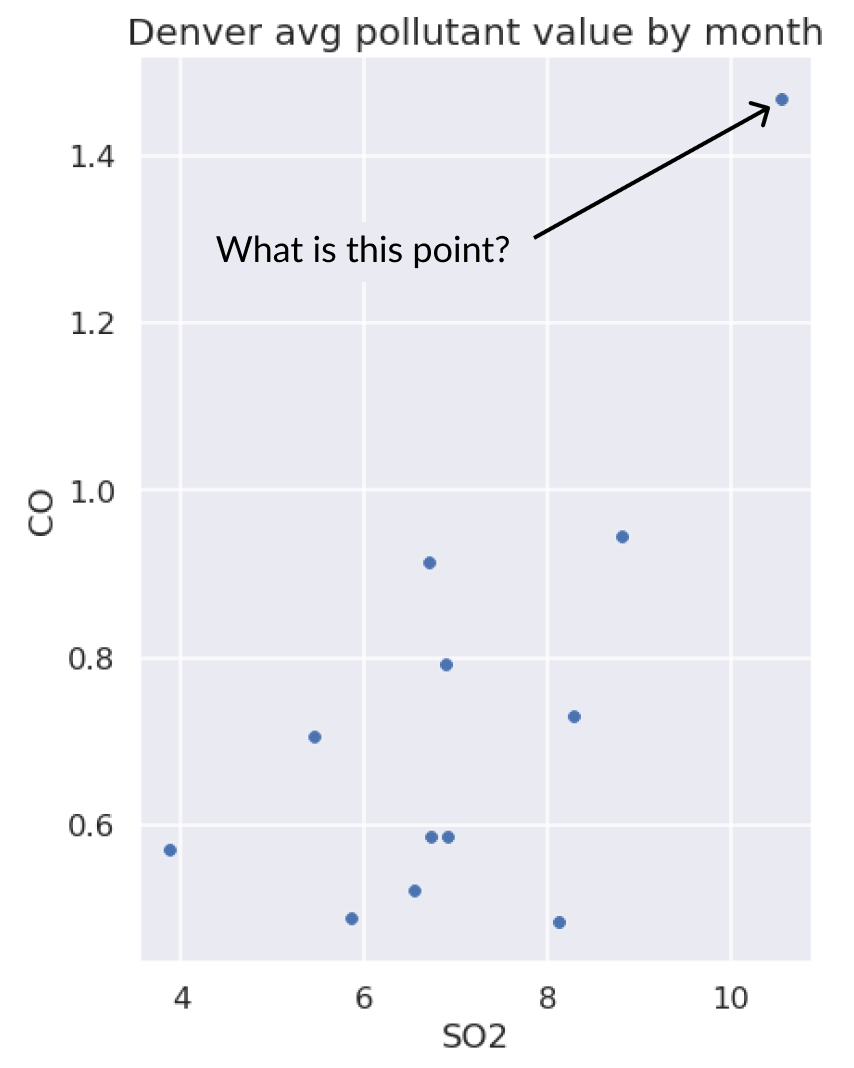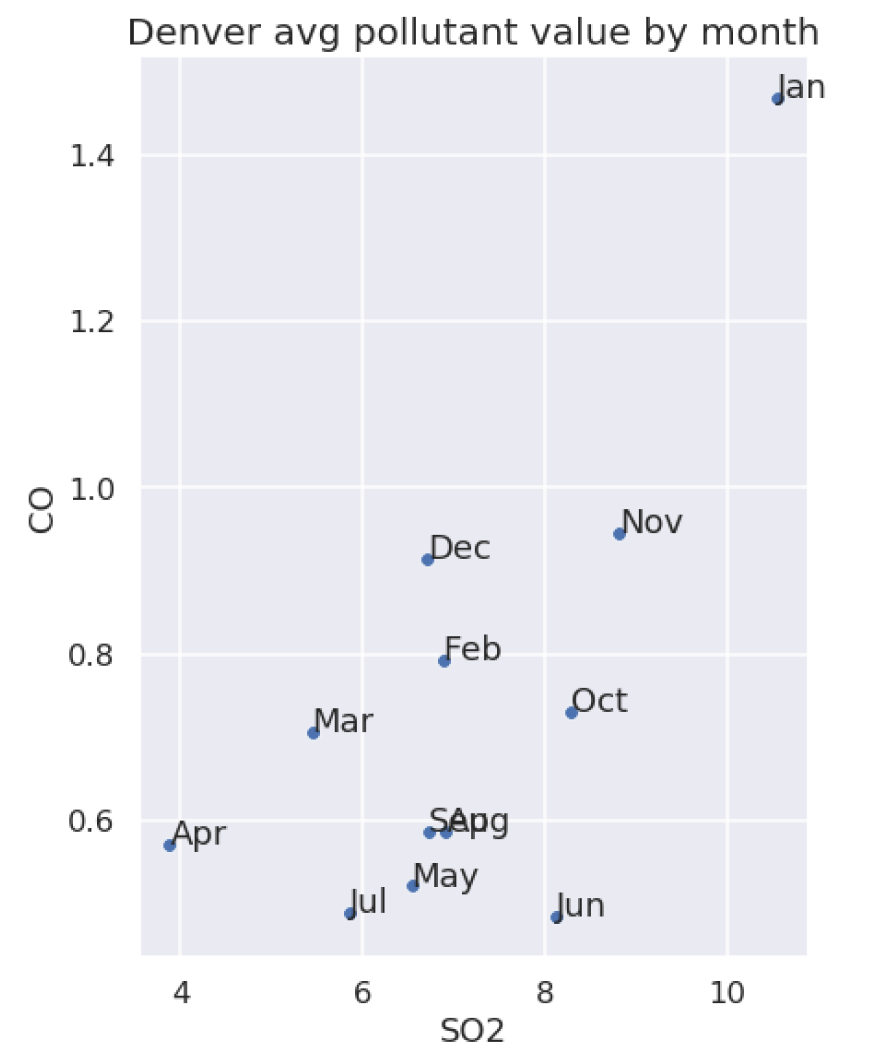Exploring the patterns
Improving Your Data Visualizations in Python

Nick Strayer
Instructor
Digging in deeper
- Investigating correlations
- Are correlations driven by confounding?
- Anything surprising?

Target audiences
- Shared with peers
- Be smart about design decisions
- Remember they aren't as familiar with data

sns.regplot('NO2', 'CO', ci=False, data=pollution,# Lower opacity of points scatter_kws={'alpha':0.2, 'color':'grey'} )

Profiling patterns
- Found interesting pattern in data
- How to quickly explore and explain the pattern?
- Use text!

Using text scatters to id outliers


g = sns.scatterplot("SO2","CO", data=long_beach_avgs) # Iterate over the rows of our data for _, row in long_beach_avgs.iterrows(): # Unpack columns from row month, SO2, CO = row# Draw annotation in correct place g.annotate(month, (SO2,CO))plt.title('Long Beach avg SO2 by CO')

Let's dig in
Improving Your Data Visualizations in Python

